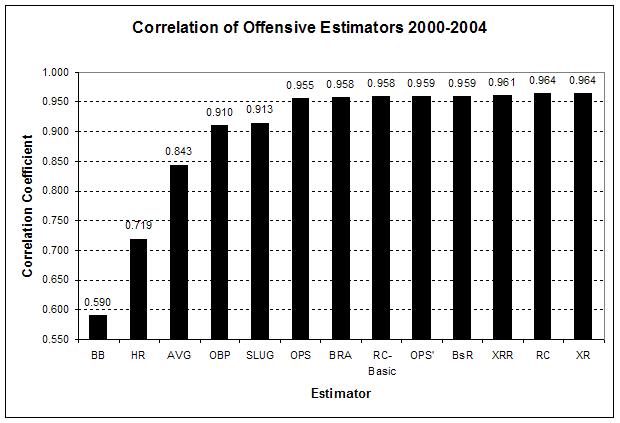I was thinking of this as I was posting about JBJ's crazy great numbers over the last 90 or so games in his career. A number that gets thrown around a lot is OPS, and it's quick, easy, and almost every baseball fan knows exactly what it refers to: the addition of on-base percentage plus slugging percentage. It's pretty easy to compare players with this number, and it has many advantages. But it also seems pretty contrives. That is, it doesn't really tell us much, does it? Just looking at a player's OPS number doesn't tell us whether the player is a low OBP person with a high SLG, or a high OBP and a low SLG, or something in the middle. Moreover, if I recall correctly, the prevailing wisdom is that OBP is much more important than SLG, so how helpful is it, anyway, to simply add on-base plus slugging, without contextualizing for the relative weight of each category?
Now think of that, and then think of the world of metrics in baseball. Some things measure clear and informative data. Batting average measures hits divided by at-bats. Whether we think it's a helpful stat or not, it does tell us something pretty clear. On the contrary, WAR is like a black box metric. I think it takes into account pretty much everything that a player does, but I have no idea how to calculate it.
So the question is, which stats or metrics do you find to be the most useful and informative? What are your "go-to" stats when evaluating a player? And what do you find to be some of the least useful or least informative metrics or stats?
Now think of that, and then think of the world of metrics in baseball. Some things measure clear and informative data. Batting average measures hits divided by at-bats. Whether we think it's a helpful stat or not, it does tell us something pretty clear. On the contrary, WAR is like a black box metric. I think it takes into account pretty much everything that a player does, but I have no idea how to calculate it.
So the question is, which stats or metrics do you find to be the most useful and informative? What are your "go-to" stats when evaluating a player? And what do you find to be some of the least useful or least informative metrics or stats?







